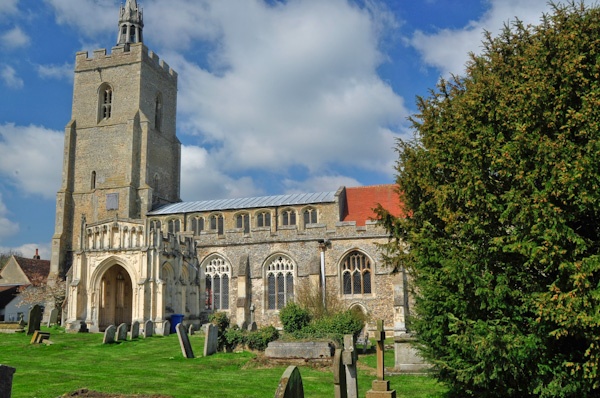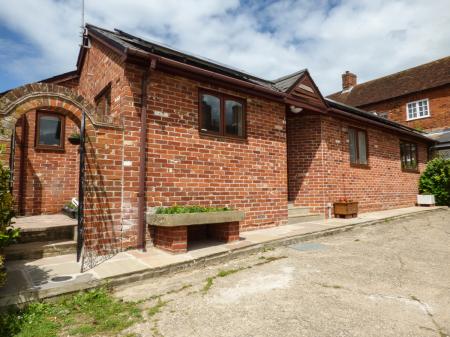
You might suspect that the very grand porch was tacked onto an earlier building, but both are primarily 15th century, with the exception of the 14th-century tower.
The north porch, however, is 14th century, and is quite rare in that it is almost entirely made of timber. Now much worn, and showing its age, the porch is nonetheless a rather moving testament to the longevity of English oak!
This wooden porch has been called one of the most interesting 14th-century porches still in existence. It is not spectacular, but rather an interesting example of rural ecclesiastical architecture in the medieval period.
What is particularly fascinating is to see the columns that support the porch structure; these are carved like stone, with Gothic capitals and moulding features, as you might expect to find in stone columns supporting an interior nave arcade. So here we have wood carved to resemble stone.

The south door is almost as worn as the north porch, and here the wood is carved with decorative quatrefoils all around the archway. Inside, the first thing you notice is the font, a rather peculiar hexagonal affair, topped with an utterly fascinating font cover unlike any I have ever seen.
The cover is Jacobean, with richly painted panels, but the thing that really sets it apart is that the cover has doors that swing wide to create a sort of triptych, with fancifully painted scrollwork inscribed with a Biblical verse from the Gospel of John.
There is more painting over the chancel arch, where a pair of brightly coloured angels flank the opening. Even more interesting are the painted niches set into the wall of the south aisle chapel. Here are a pair of ornately carved niches one atop the other, each painted inside, with another painting of a stylish King and St Edmund looking very secular to one side.
There are several interesting memorials, including one rather moving brass to David Birde, dated 1606. Birde was only a few months old at the time of his death, and the brass shows the child lying in bed, with a little pair of shoes tucked beneath the bed. At the other extreme is a plain stone wall tablet to Elizabeth Hyam, who died in 1748 at the ripe old age of 113.
There is also a very nice piscina under an ogee arch, set into the wall and a pair of old books in a display case. One of these is a Book of Common Prayer, dated 1692, containing a special service of thanksgiving for James I's deliverance from the Gunpowder Plot. The second book is a Book of Homilies, dated 1683.
St Mary's is a delightful building, well worth a wander about to explore. And Boxford itself is a pretty place, with several interesting examples of timber-framed cottages near the church.












 We've 'tagged' this attraction information to help you find related historic attractions and learn more about major time periods mentioned.
We've 'tagged' this attraction information to help you find related historic attractions and learn more about major time periods mentioned.


